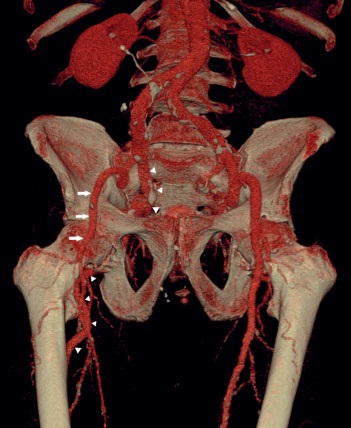Snapshot quiz 13/33

Published: 08/28/2013
Authors: Joyce D, Byrne J, Mehigan D and Barry M
A 68-year-old man presented with a short history of intermittent claudication affecting the right leg. The CT angiogram demonstrates a right-sided persistent sciatic artery (upper arrowheads), which takes origin from the internal iliac, passes posteriorly out of the pelvis and descends to supply the popliteal artery (lower arrowheads). Arrows depict the diminshing external iliac artery leading to a rudimentary right superficial femoral artery. Arterial anatomy is normal on the left side. Patients with a persistent sciatic artery usually present with a pulasatile gluteal mass and increased pain when sitting, or following arterial rupture. During early embryonic development, the sciatic artery is the primitive lower limb vessel which normally regresses. In rare cases it persists as a continuation of a hypertrophied internal iliac artery.

